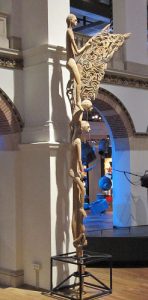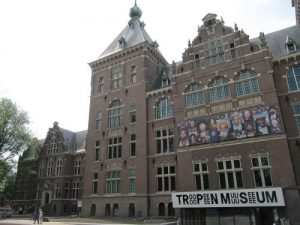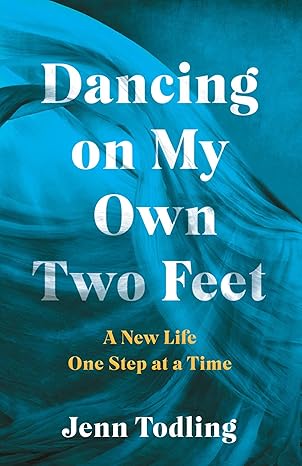When Fiction is Perceived as Fact
 My latest novel, Rituals of the Dead, came to be because I wanted to write a mystery about an Asmat bis pole. Considering the Asmat live in the Indonesian province of Papua, the setting for my historical mystery was easily decided.
My latest novel, Rituals of the Dead, came to be because I wanted to write a mystery about an Asmat bis pole. Considering the Asmat live in the Indonesian province of Papua, the setting for my historical mystery was easily decided.
The premise was simple: my protagonist – an art history student in present-day Amsterdam – would investigate an event that took place in Papua, before the Dutch government ceded their control to the newly-formed nation of Indonesia in 1963.
However, by setting my novel in Dutch New Guinea, I unintentionally mingled fact with fiction in the minds of many readers.
Bis Poles: Sculptures from the Rain Forest
The fictitious exhibition central to my story is based on an actual exhibition of Asmat artifacts entitled Bis Poles: Sculptures from the Rain Forest. I worked on this project in 2008 as a collection researcher for the Tropenmuseum (Museum of the Tropics), Amsterdam’s only ethnographic museum.
Tasked with finding audiovisual materials, I searched through many fascinating archives and photographic collections for images pertaining to Asmat artifacts, as well as a number of legendary missionaries and anthropologists active in Dutch New Guinea. During my research I came across many bizarre stories about headhunting raids, brave missionaries, crazy explorers and daring anthropologists that stuck with me, long after the exhibition opened.
 Two of the poles displayed in the Tropenmuseum exhibition were collected by American anthropologist Michael Rockefeller in 1961. They were later donated to the National Ethnography Museum in Leiden by his parents, to thank the Dutch government for their help in searching for their missing son. Another tantalizing tidbit gleaned from the archives was that Dutch missionary Reverend Gerard Zegwaard had an appointment to meet with Rockefeller after he returned from an acquisition trip upriver. The young American disappeared days later, resulting in one of the most famous unsolved mysteries of our time.
Two of the poles displayed in the Tropenmuseum exhibition were collected by American anthropologist Michael Rockefeller in 1961. They were later donated to the National Ethnography Museum in Leiden by his parents, to thank the Dutch government for their help in searching for their missing son. Another tantalizing tidbit gleaned from the archives was that Dutch missionary Reverend Gerard Zegwaard had an appointment to meet with Rockefeller after he returned from an acquisition trip upriver. The young American disappeared days later, resulting in one of the most famous unsolved mysteries of our time.
These historical facts provided me with a wild cast of characters and events that I used as the basis for a mystery about bis poles and artifact smuggling.
Rockefeller was not Unique
Because Rockefeller vanished before I was born, I didn’t realize how many theories there were regarding his disappearance or current whereabouts. At least, not until I began mentioning on social media that my work-in-progress was about an anthropologist gone missing in Papua. Inevitably, the circumstances surrounding his disappearance were recounted in comments on my posts. I also regularly receive emails from what I call “conspiracy theorists”, asking me to share their idea of what happened to him with the world.
Unfortunately for them, my character Mayfield is not a fictionalized version of Michael Rockefeller, nor is this book my theory about his death. Without spoiling the plot, I can even reveal my fictitious anthropologist disappears for a reason that’s never been linked to Rockefeller.
Trust me, that was difficult to do. Not only are there many theories about his demise, Rockefeller’s story is quite similar to those of other westerners working on the island in the 1960s.
Yes, Michael Rockefeller really did vanish while on a collecting trip in Dutch New Guinea – as my fictitious protagonist does. Also well-documented are the unexplained disappearances of other explorers and anthropologists during the 1930s through 1960s. Rockefeller’s vanishing received so much media attention because his father was the Governor of New York State at the time.
Western Collectors, Missionaries and Asmat Artifacts
Rockefeller did offer more than usual for artifacts, just as my protagonist does. There are even instances recorded in Dutch colonial documentation of Asmat villagers asking permission to go on a headhunting raid so they could make a fortune by selling the newly acquired skulls to Rockefeller.
He was by no means unique. I’ve found other accounts of rich, western collectors who offered more than the going rate, particularly those on short acquisition trips who swooped in and bought up everything they could.
At least Rockefeller paid for the items he collected. The colonial archives are full of references to anthropologists, colonial government officials, surveyors, missionary workers and adventurers accused of stealing culturally-significant objects from Asmat villages.
One example is Carel Groenevelt, a professional collector who acquired thousands of Asmat artifacts for museums, including fifty of the seventy-five poles held in Dutch collections. Reverend Zegwaard acted as a middleman, helping him make contact with the Asmat and barter for their artwork. Groenevelt later admitted to finding poles on the ground in 1953 and taking them – without asking permission from, or paying, the locals who carved them. All of the artifacts he collected are still part of these museums’ collections.
Who is this Dutch missionary, Reverend Gerard Zegwaard, you may ask. He was the first priest to successful connect with the Asmat and his work paved the way for other churches to establish missions in the region. His is also well-known for his role as a protector of Asmat art. In many ways his early successes and passion for Asmat culture served as the model for another character in my novel, a priest named Kees Terpstra.
These facts provided the historical context and settings for my artifact mystery. The resulting story, all of the characters involved, and the restitution cases discussed in this novel are figments of my imagination.
No matter what the conspiracy theorists may say.
Rituals of the Dead: An Artifact Mystery
 Art, religion, and anthropology collide in Alderson’s latest mystery thriller, Rituals of the Dead, book three of the Adventures of Zelda Richardson series.
Art, religion, and anthropology collide in Alderson’s latest mystery thriller, Rituals of the Dead, book three of the Adventures of Zelda Richardson series.
Art history student Zelda Richardson is working at the Tropenmuseum in Amsterdam on an exhibition of bis poles from the Asmat region of Papua – the same area where a famous American anthropologist disappeared in 1962. When his journal is found inside one of the bis poles, Zelda is tasked with finding out more about the man’s last days and his connection to these ritual objects.
Zelda is pulled into a world of shady anthropologists, headhunters, missionaries, art collectors, and smugglers – where the only certainty is that sins of the past are never fully erased.
Join Zelda as she grapples with the anthropologist’s mysterious disappearance fifty years earlier, and a present-day murderer who will do anything to prevent her from discovering the truth.
Purchase Rituals of the Dead links:
Amazon: https://www.amazon.com/Rituals-Dead-Artifact-Adventures-Richardson-ebook/dp/B0795Z3HRX/
KOBO: https://www.kobo.com/nl/en/ebook/rituals-of-the-dead-an-artifact-mystery
iBooks: https://itunes.apple.com/us/book/rituals-of-the-dead-an-artifact-mystery/id1332496345?mt=11
Barnes & Noble NOOK: https://www.barnesandnoble.com/w/rituals-of-the-dead-jennifer-s-alderson/1127732017?ean=2940155064152
Smashwords: https://www.smashwords.com/books/view/771033
Amazon CO UK: https://www.amazon.co.uk/Rituals-Dead-Artifact-Adventures-Richardson-ebook/dp/B0795Z3HRX
Google Play: https://play.google.com/store/books/details/Jennifer_S_Alderson_Rituals_of_the_Dead?id=IWFODwAAQBAJ
Author Bio
 Jennifer S. Alderson was born in San Francisco, raised in Seattle and currently lives in Amsterdam. Her love of travel, art and culture inspires her on-going mystery series, the Adventures of Zelda Richardson. Her background in journalism, multimedia development and art history enriches her novels.
Jennifer S. Alderson was born in San Francisco, raised in Seattle and currently lives in Amsterdam. Her love of travel, art and culture inspires her on-going mystery series, the Adventures of Zelda Richardson. Her background in journalism, multimedia development and art history enriches her novels.
In Down and Out in Kathmandu, Zelda gets entangled with a gang of smugglers whose Thai leader believes she’s stolen his diamonds. The Lover’s Portrait is a suspenseful “whodunit?” about Nazi-looted artwork that transports readers to wartime and present-day Amsterdam. Art, religion, and anthropology collide in Rituals of the Dead, a thrilling artifact mystery set in Papua and the Netherlands. Learn more about Jennifer and her books on her website: http://www.jennifersalderson.com/.
Connect with Jennifer via her website, Facebook, Goodreads or Twitter.
Category: Contemporary Women Writers, On Writing





























Thanks for sharing my article, Barbara Bos! I am truly honored.
Fascinating.